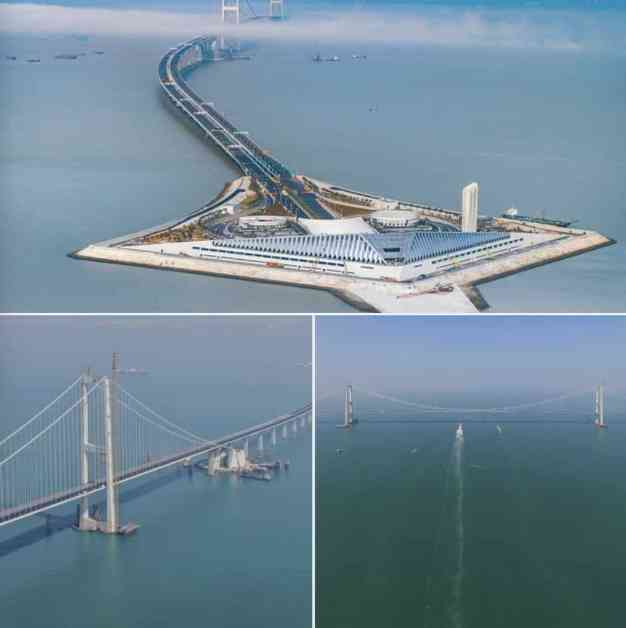China recently unveiled its latest mega infrastructure project, the Shenzhen-Zhongshan Link, which consists of a combination of bridges, artificial islands, and an underwater tunnel. This colossal engineering marvel is located in Guangdong Province and spans a total of 24 kilometers. The project aims to improve transportation connectivity between the two cities, Shenzhen and Zhongshan, in response to the region’s challenges posed by wide bodies of water.
The Pearl River estuary, where the project is located, is known for its high population density, housing approximately 86 million people across various cities including Hong Kong and Macau. The newly opened link is expected to have a significant impact on the economic and social development of the Greater Bay Area (GBA) by reshaping the road network layout in the region.
One of the key features of the Shenzhen-Zhongshan Link is the underwater tunnel section, which spans 6.8 kilometers and is equipped with advanced safety systems such as firefighting and smoke exhaust systems. The tunnel also boasts a team of 14 robots that patrol the area, monitoring pipes, cables, and responding to emergencies like car accidents. Additionally, a color-coded light system along the tunnel walls provides information on traffic conditions and can guide people during crises.
The project also includes two artificial islands, with the western island shaped like a diamond and the eastern island covering an area equivalent to 48 standard football fields. The infrastructure features eight lanes, allowing vehicles to travel at speeds of up to 100 km/h. However, during the opening day, the influx of curious visitors caused a massive traffic jam, highlighting the need for better traffic management.
The Shenzhen-Zhongshan Link is part of China’s ongoing efforts to develop mega infrastructure projects, following the success of the Hong Kong-Zhuhai-Macau Bridge (HZMB) in 2018. The HZMB, which spans 55 kilometers, is the world’s longest sea-crossing bridge and incorporates advanced design features to withstand natural disasters and heavy cargo traffic. Similar to the Shenzhen-Zhongshan Link, the HZMB also includes a submerged tunnel section, showcasing China’s expertise in building complex and resilient infrastructure.
With the addition of the Shenzhen-Zhongshan Link to the existing network of sea and river crossings in the region, China aims to enhance connectivity between bay area cities and promote economic growth through improved transportation infrastructure. The completion of these mega projects demonstrates China’s commitment to sustainable development and innovation in infrastructure construction, setting a benchmark for future transportation projects worldwide.






